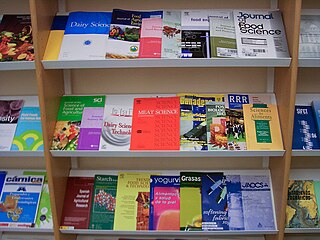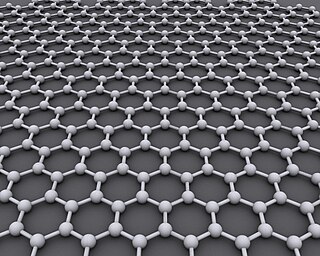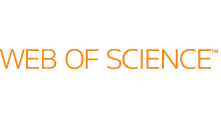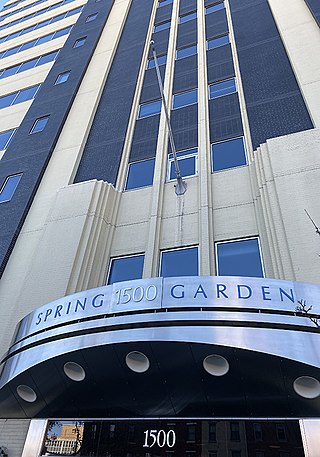
Academic publishing is the subfield of publishing which distributes academic research and scholarship. Most academic work is published in academic journal articles, books or theses. The part of academic written output that is not formally published but merely printed up or posted on the Internet is often called "grey literature". Most scientific and scholarly journals, and many academic and scholarly books, though not all, are based on some form of peer review or editorial refereeing to qualify texts for publication. Peer review quality and selectivity standards vary greatly from journal to journal, publisher to publisher, and field to field.

An academic journal or scholarly journal is a periodical publication in which scholarship relating to a particular academic discipline is published. Academic journals serve as permanent and transparent forums for the presentation, scrutiny, and discussion of research. They nearly universally require peer review or other scrutiny from contemporaries competent and established in their respective fields. Content typically takes the form of articles presenting original research, review articles, or book reviews. The purpose of an academic journal, according to Henry Oldenburg, is to give researchers a venue to "impart their knowledge to one another, and contribute what they can to the Grand design of improving natural knowledge, and perfecting all Philosophical Arts, and Sciences."

Graphene is an allotrope of carbon consisting of a single layer of atoms arranged in a hexagonal lattice nanostructure. The name is derived from "graphite" and the suffix -ene, reflecting the fact that the graphite allotrope of carbon contains numerous double bonds.
The impact factor (IF) or journal impact factor (JIF) of an academic journal is a scientometric index calculated by Clarivate that reflects the yearly mean number of citations of articles published in the last two years in a given journal, as indexed by Clarivate's Web of Science.

Nature Chemical Biology is a monthly peer-reviewed scientific journal published by Nature Portfolio. It was established in June 2005 by founding Chief Editor Terry L. Sheppard as part of Nature Publishing Group. Sheppard was the Chief Editor of the journal 2004–2022. The current editor-in-chief is Russell Johnson.

PLOS One is a peer-reviewed open access mega journal published by the Public Library of Science (PLOS) since 2006. The journal covers primary research from any discipline within science and medicine. The Public Library of Science began in 2000 with an online petition initiative by Nobel Prize winner Harold Varmus, formerly director of the National Institutes of Health and at that time director of Memorial Sloan–Kettering Cancer Center; Patrick O. Brown, a biochemist at Stanford University; and Michael Eisen, a computational biologist at the University of California, Berkeley, and the Lawrence Berkeley National Laboratory.

Optics Express is a biweekly peer-reviewed scientific journal published by Optica. It was established in 1997. The journal reports on scientific and technology innovations in all aspects of optics and photonics. The Energy Express supplement reports research on the science and engineering of light and its impact on sustainable energy development, the environment, and green technologies. The editor-in-chief is James Leger.
Journal Citation Reports (JCR) is an annual publication by Clarivate. It has been integrated with the Web of Science and is accessed from the Web of Science Core Collection. It provides information about academic journals in the natural and social sciences, including impact factors. The JCR was originally published as a part of the Science Citation Index. Currently, the JCR, as a distinct service, is based on citations compiled from the Science Citation Index Expanded and the Social Sciences Citation Index. As of the 2023 edition, journals from the Arts and Humanities Citation Index and the Emerging Sources Citation Index will also be included.

ACS Chemical Biology is a monthly peer-reviewed scientific journal published since 2006 by the American Chemical Society. It covers research at the interface between chemistry and biology spanning all aspects of chemical biology. The founding editor-in-chief was Laura L. Kiessling. Chuan He began the role of editor-in-chief in January 2022. According to the Journal Citation Reports, the journal has a 2021 impact factor of 4.634.

The Web of Science is a paid-access platform that provides access to multiple databases that provide reference and citation data from academic journals, conference proceedings, and other documents in various academic disciplines. It was originally produced by the Institute for Scientific Information. It is currently owned by Clarivate.

Walter Alexander "Walt" de Heer is a Dutch physicist and nanoscience researcher known for discoveries in the electronic shell structure of metal clusters, magnetism in transition metal clusters, field emission and ballistic conduction in carbon nanotubes, and graphene-based electronics.

Sir Konstantin Sergeevich Novoselov is a Russian-British physicist, and a professor at the Centre for Advanced 2D Materials, National University of Singapore. He is also the Langworthy Professor in the School of Physics and Astronomy at the University of Manchester. His work on graphene with Andre Geim earned them the Nobel Prize in Physics in 2010.
The Journal of Biomedical Materials Research is a peer-reviewed scientific journals of biomedical material science. It was established in 1967. In 1974, it absorbed Biomedical Materials Symposium (1971–1974). In 1990, it absorbed the journal Journal of Applied Biomaterials (1990–1995). In 2002, it split into two parts, Journal of Biomedical Materials Research Part A, and Journal of Biomedical Materials Research Part B. The two parts are published by John Wiley & Sons.

ACS Photonics is a monthly, peer-reviewed, scientific journal, first published in January 2014 by the American Chemical Society. The current editor in chief is Romain Quidant. The interdisciplinary journal publishes original research articles, letters, comments, reviews and perspectives.
In materials science, the term single-layer materials or 2D materials refers to crystalline solids consisting of a single layer of atoms. These materials are promising for some applications but remain the focus of research. Single-layer materials derived from single elements generally carry the -ene suffix in their names, e.g. graphene. Single-layer materials that are compounds of two or more elements have -ane or -ide suffixes. 2D materials can generally be categorized as either 2D allotropes of various elements or as compounds.

Diamond and Related Materials is a peer-reviewed scientific journal in materials science covering research on all forms of diamond and other related materials, including diamond-like carbons, carbon nanotubes, graphene, and boron and carbon nitrides. The journal is published by Elsevier and the editor-in-chief is Ken Haenen.

Twistronics is the study of how the angle between layers of two-dimensional materials can change their electrical properties. Materials such as bilayer graphene have been shown to have vastly different electronic behavior, ranging from non-conductive to superconductive, that depends sensitively on the angle between the layers. The term was first introduced by the research group of Efthimios Kaxiras at Harvard University in their theoretical treatment of graphene superlattices.

Antonio Helio de Castro Neto is a Brazilian-born physicist. He is the founder and director of the Centre for Advanced 2D Materials at the National University of Singapore. He is a condensed matter theorist known for his work in the theory of metals, magnets, superconductors, graphene and two-dimensional materials. He is a distinguished professor in the Departments of Materials Science Engineering, and Physics and a professor at the Department of Electrical and Computer Engineering. He was elected as a fellow of the American Physical Society in 2003. In 2011 he was elected as a fellow of the American Association for the Advancement of Science.
npj 2D Materials and Applications, is an open access peer-reviewed scientific journal published by Nature Publishing Group. It focuses on 2D materials, including fundamental behaviour, synthesis, properties and applications.

Clarivate Plc is a British-American publicly traded analytics company that operates a collection of subscription-based services, in the areas of bibliometrics and scientometrics; business / market intelligence, and competitive profiling for pharmacy and biotech, patents, and regulatory compliance; trademark protection, and domain and brand protection. In the academy and the scientific community, Clarivate is known for being the company which calculates the impact factor, using data from its Web of Science product family, that also includes services/applications such as Publons, EndNote, EndNote Click, and ScholarOne. Its other product families are Cortellis, DRG, CPA Global, Derwent, MarkMonitor, CompuMark, and Darts-ip, and also the various ProQuest products and services.















